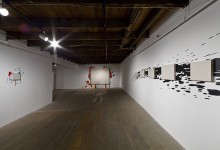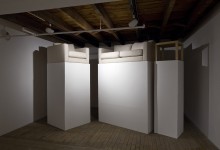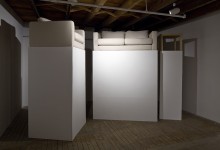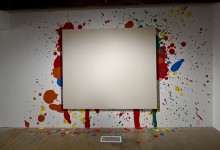There is something fascinating, aesthetically comforting, about a raw canvas. Its newness begets the kind of potential one can only experience briefly, like an untouchable utopia. With one mark, one etch, one stroke of paint, one utterance, the beauty may taint and resolve itself to complicity. The formal constraints of composition, the way in which each mark somehow absolves itself from the object whilst rendering the subject liquid, pools chaotically amid a collusion of process and procession. A painting without paint, or a tablaux of such perfection one need only admire it for the perceptual concept it affords. Here, the idea is what counts. In fact, the idea may appear at times with such veracity that it avoids altogether a mark of singularity – a few smears on the wall giving enough reason to believe that its very primacy, its very obejcthood, defies reason.
Raised in ascension, a post-relational scene of domesticity awaits. As before, there is something untouchable to this space. It may be the site of a clear and waiting patience, where in a form of purgatory we await, half way in between the cave of form and ideal. Or, perhaps the space is one where a question is posed and an encounter envisaged. Should the structure be climbed? Rather, should the structure be abandoned and its utilitarian function returned? Does the gallery really need another couch to lay psychological assumption to rest? In our time where one and all are obsessed with status updates and the most recent behavioural data available, a foregone conclusion is that an answer is available in an instant. To many, access is power, not a question of aesthetics.
Mike Patten’s syncretic composites ask a bit more than they give back. What feels like a tug-of-war between object and concept, form and idea, is better suited to a snug placement of conceptual narratives drawn from past work. From the lost thoughts of communication to an absence of natural curves in Mondrian’s garden, Patten weaves art historical precedent and personal experience, creating patterns without definable form. Shape, size, medium, these are relevant concerns, but they hide something. It begs the question, what is behind the canvas? Why raise the status of leisure to an uncomfortable crouch? And why would you waste all that paint on a perfectly good wall?













